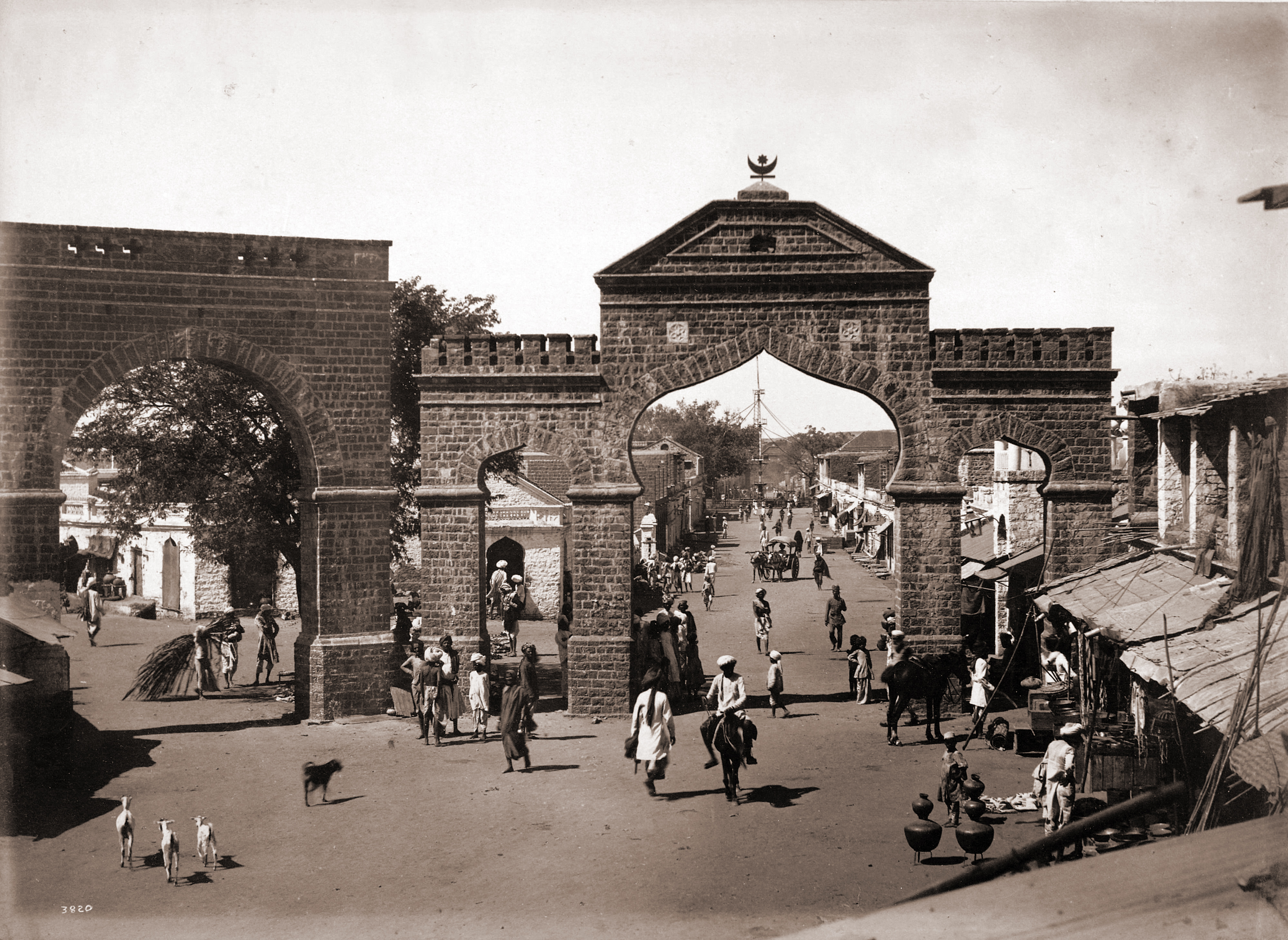|
Jama Mosque Gulbarga
Jamia Masjid Gulbarga is a mosque located in Gulbarga, Karnataka, India. It was built by Bahamani Sultan Mohammad Shah after he defeated kapaya nayaka of warangal. It is regarded as one of the best examples of mosque architecture in South Asia. The arches design of Jamia Masjid Gulbarga reflects in the interiors of Spanish Mosque of Hyderabad, India. These are only two mosques in India which have interiors similar to the Great Cathedral–Mosque of Córdoba in Spain. The complex was put by UNESCO on its "tentative list" to become a World Heritage Site in 2014, with others in the region, under the name Monuments and Forts of the Deccan Sultanate (despite there being a number of different sultanates). Architecture The Jama Masjid Gulbarga does not have minarets. It is built inside the Gulbarga Fort.Interesting highlights about Jama Masjid, Gulbarga Built in 1367 AD, designed by a Persian architect, Rafi Two huge black stone carved water storage vessels near the entrance, to h ... [...More Info...] [...Related Items...] OR: [Wikipedia] [Google] [Baidu] |
Gulbarga, Karnataka
Kalaburagi, formerly known as Gulbarga, is a city in the Indian state of Karnataka. It is the administrative headquarters of the Kalaburagi district and is the largest city in the region of North Karnataka (Kalyana-Karnataka). Kalaburagi is 623 km north of the state capital city of Bangalore. It was incorporated into the newly formed Mysore State (now known as Karnataka) through the States Reorganisation Act in 1956. Kalaburagi city is governed by a Municipal Corporation and is in the Kalaburagi Urban Region. It is called a Sufi city. It has famous religious structures, like the Bande Nawaz, Khwaja Banda Nawaz Dargah, the Sharana Basaveshwara Temple and the Buddha Vihar, Gulbarga, Buddha Vihar. It also has a Kalaburagi Fort, fort built during the Bahmani rule. Other Bahmani monuments include the Haft Gumbaz (seven domes together) and the Shor Gumbad. Kalaburagi has the world's largest cannon. Kalaburagi has a few architectural marvels built during the Bahamani Kingdom rul ... [...More Info...] [...Related Items...] OR: [Wikipedia] [Google] [Baidu] |
Minaret
A minaret (; ar, منارة, translit=manāra, or ar, مِئْذَنة, translit=miʾḏana, links=no; tr, minare; fa, گلدسته, translit=goldaste) is a type of tower typically built into or adjacent to mosques. Minarets are generally used to project the Muslim call to prayer ('' adhan''), but they also served as landmarks and symbols of Islam's presence. They can have a variety of forms, from thick, squat towers to soaring, pencil-thin spires. Etymology Two Arabic words are used to denote the minaret tower: ''manāra'' and ''manār''. The English word "minaret" originates from the former, via the Turkish version (). The Arabic word ''manāra'' (plural: ''manārāt'') originally meant a "lamp stand", a cognate of Hebrew '' menorah''. It is assumed to be a derivation of an older reconstructed form, ''manwara''. The other word, ''manār'' (plural: ''manā'ir'' or ''manāyir''), means "a place of light". Both words derive from the Arabic root ''n-w-r'', which has a ... [...More Info...] [...Related Items...] OR: [Wikipedia] [Google] [Baidu] |
Religious Buildings And Structures Completed In 1367
Religion is usually defined as a social-cultural system of designated behaviors and practices, morals, beliefs, worldviews, texts, sanctified places, prophecies, ethics, or organizations, that generally relates humanity to supernatural, transcendental, and spiritual elements; however, there is no scholarly consensus over what precisely constitutes a religion. Different religions may or may not contain various elements ranging from the divine, sacred things, faith,Tillich, P. (1957) ''Dynamics of faith''. Harper Perennial; (p. 1). a supernatural being or supernatural beings or "some sort of ultimacy and transcendence that will provide norms and power for the rest of life". Religious practices may include rituals, sermons, commemoration or veneration (of deities or saints), sacrifices, festivals, feasts, trances, initiations, funerary services, matrimonial services, meditation, prayer, music, art, dance, public service, or other aspects of human culture. Religions have ... [...More Info...] [...Related Items...] OR: [Wikipedia] [Google] [Baidu] |


